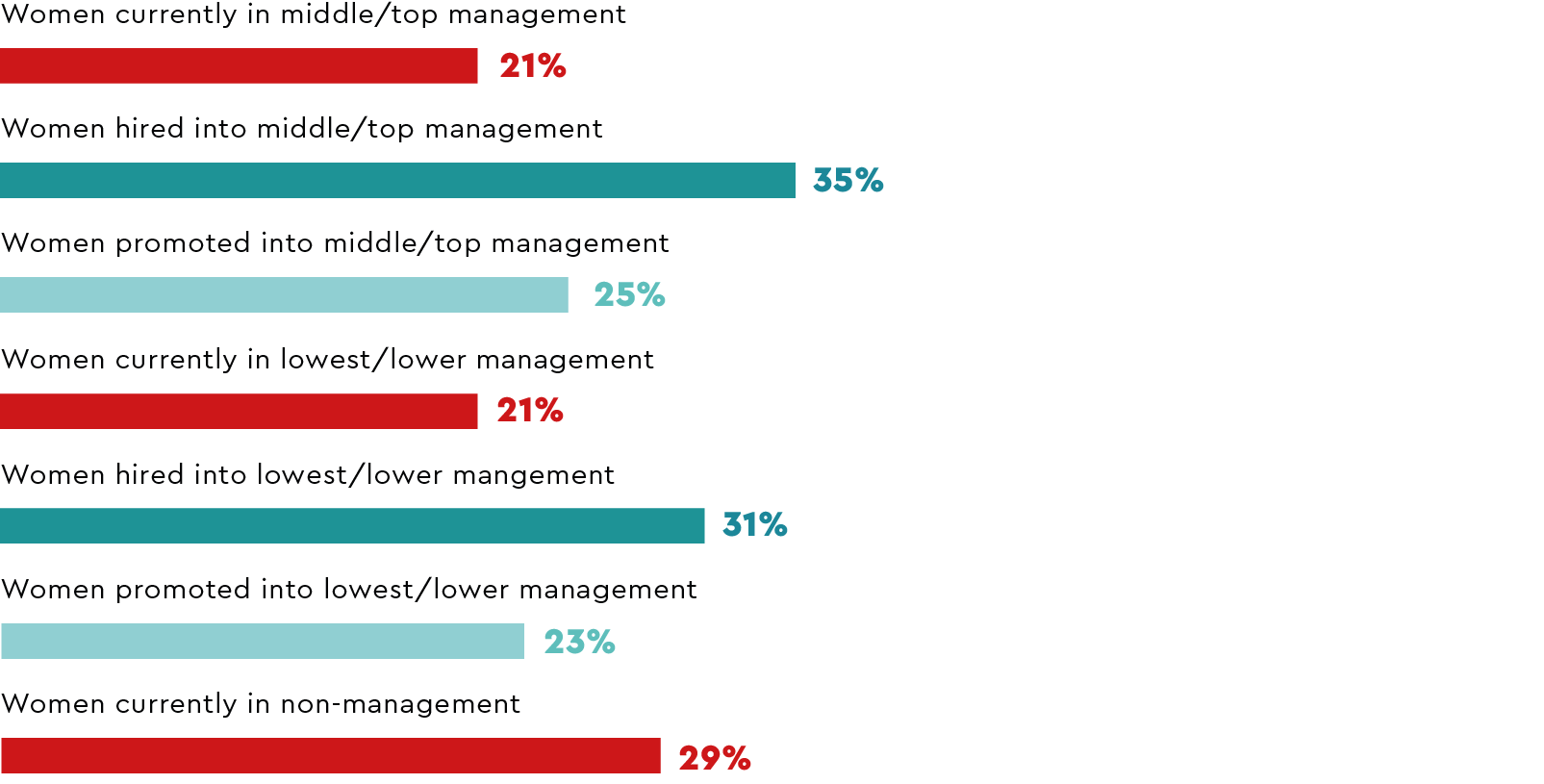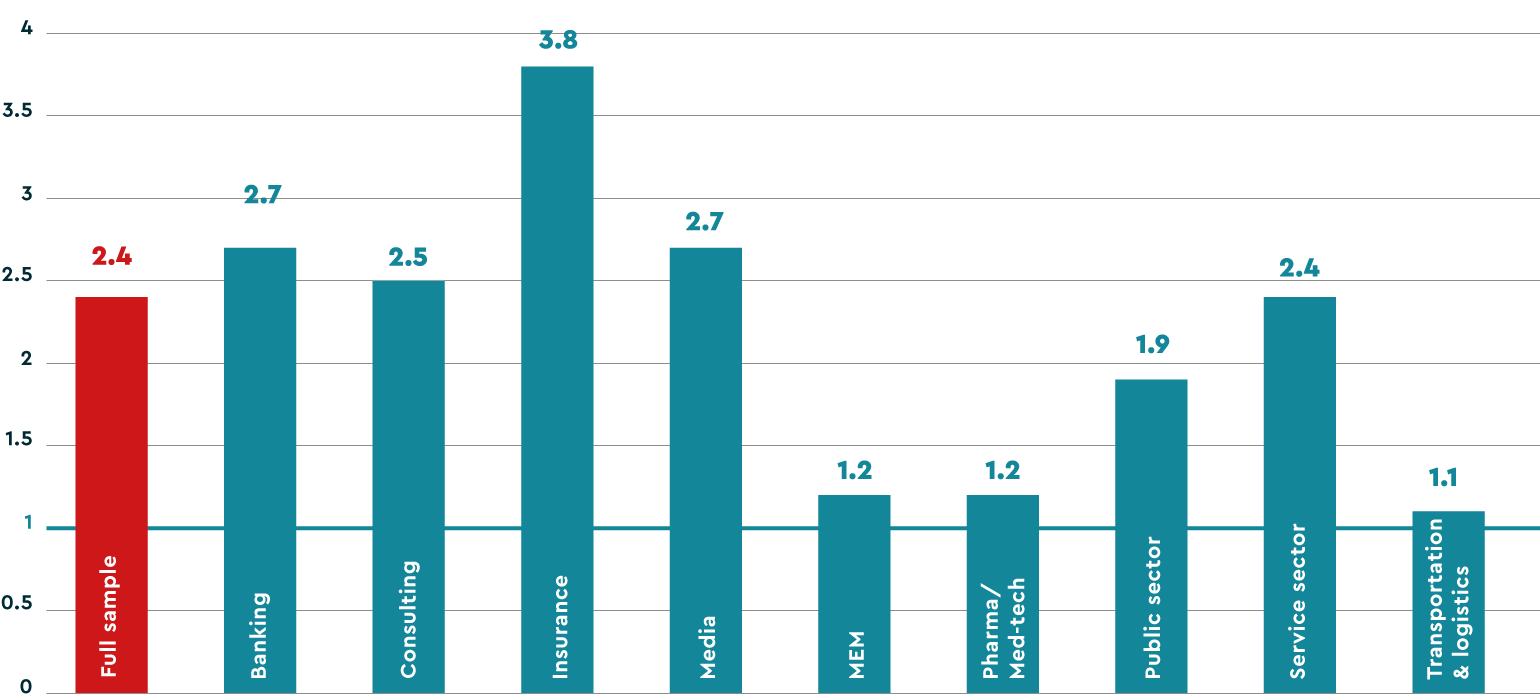In the MEM industry, the share of women is one of the lowest compared to the overall GIR sample – across almost all management levels, save the very top. These low percentages mean that women remain the minority among the workforce. At the same time, compared to other sectors and the overall sample, the share of women fluctuates very little across all levels of management and is only slightly lower than in non-management. That means there are no significant hurdles for women to reach leadership positions.
Looking at pipeline management of female talents, women are promoted at a lower rate than their representation in non-management. There is clear room for improvement here. The female pipeline is better utilized for middle and top management promotions. New hires contribute more to increasing the share of women at all management levels than is the case for promotions.

The MEM industry has one of the lowest GCI by industry. This suggests that there are fewer obstacles for women to make it to the top than in other industries, though it should be kept in mind that the MEM industries has few women overall.

Women have a lower average employment percentage in non-management than upper management levels. In practice, this means: Women must make up 13 percentage points of their employment percentage from non-management to make it to the top . This is in contrast to just 2 percentage points for men. The difference between men and women means women are at a disadvantage when climbing the career ladder because they must significantly increase their employment percentage.
Compared to other industries, the MEM sector has a full-time culture even at low management levels. Decoupling leadership from full-time might make the industry more attractive to diverse talents.